Monsoon is the most welcoming season in India. It brings a respite from the hot and humid summer. Monsoon in India comes in June and lasts till September. The fresh smell of petrichor, along with the drizzling of rain, brings a calming impact on our minds after the hot summer days. Monsoon is also the season of lovers. It is not just us, but nature too seems to be welcoming the season with open arms. The trees and plants are washed in the dripping rain; plants look greener and fresher. The rainy season also brings a variety of fruits, vegetables, and flowers that we can enjoy. In this article, we are going to discuss the rainy season vegetables list. We will also throw light on the fruits and flowers that blossom in this season.

There are a variety of vegetables grown in the rainy season. But one has to know which vegetables should be grown in the rainy season. Some plants require a specific environment to thrive, temperature level, humidity, soil pH level- these are the factors that play a vital role in the growth and development of plants. The seedlings often require special care to grow in the high humidity. Extreme fluctuation in temperature can be detrimental to the growth of plants. Therefore, one must possess knowledge about which plants to grow in which season.
Table of Contents
Rainy Season Vegetables in India
There are a variety of rainy season plants that grow best in this season. Monsoon provides them the optimum temperature and moisture for their successful growth. Mentioned below are some of the rainy season vegetables in India.
Cucumber
It is one of the easiest vegetables to grow and should be there in your rainy season vegetables list. With adequate watering and warmth, it can grow in a snap. Cucumbers can be grown in small places, too, since they possess climbing abilities. Cucumbers are perfect for salads and sandwiches. They are also great for weight loss. Cucumbers have high water content and are good for the body due to their cooling properties.
Cucumbers are one of the rainy season foods that can be grown very easily. All one needs to do is pick the appropriate spot. Cucumbers grow well in moist and well-drained soil. Cucumbers seeds should be planted 1 inch deep and 2-3 inches apart in a row. They can be grown in limited spaces, too, with the help of trellis. Trellising will also protect the fruit from lying on the ground. Cucumbers grow best at an ideal temperature of 16-32 degrees Celsius.
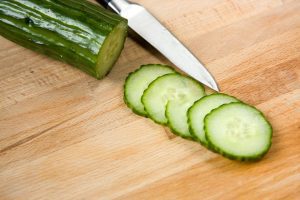
Tomato
Almost every dish requires the use of tomatoes. Be it an Indian curry, Chutney, or simply sandwiches, one cannot imagine their salads and soups without tomatoes. Hence tomato should acquire a place in your rainy season vegetables list. Tomatoes add a tangy flavor to your dishes. They are also one of the easiest vegetables to grow. Tomatoes grow ideally during the rainy season in June to August in North India and July to August in South India. Tomatoes grow best in the sun, but they need well-drained soil too.
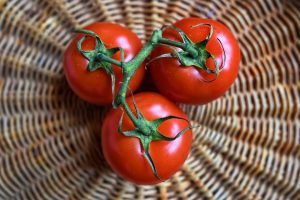
Tomatoes can be grown very easily. Select a site that receives 5-6 hours of direct sunlight. Tomato seeds should be planted at a depth of 1/4th inches deep in well-drained soil. The seeds should be planted, keeping a minimum distance of 3-4 inches between them. Treat them with organic fertilizers for the proper growth of the seeds. After 10-14 days of sowing, you will be able to see the seedlings. The ideal temperature for tomato seeds to grow into well-grown plants is 21-27 degrees Celsius.
Once your tomatoes turn bright red and firm, you can pick them and use them in your kitchen. There are a wide variety of sizes of tomatoes- from cherry tomatoes to giant-orange sized. You can purchase the seeds from the nursery depending on your choice and requirement.
Beans
Beans are easy to grow, maintain, and harvest. If you are a beginner at gardening, you can very conveniently start with these. They can add a nutritious touch to your dishes. Beans are a great ingredient for noodles, fried rice, curries and can be eaten even fried. The best time to grow beans in India in the rainy season is July to August. Yes, these can come in your rainy season vegetables list. They can be grown in limited spaces since they do not take much space.
Beans can grow both in the sun as well as shade. Hence, choose any convenient spot in your garden with partial sunlight. Beans should be directly planted in your garden and not transplanted since they have a very delicate root structure that can get damaged with the slightest rough handling. Plant the seeds 1 inch deep in the soil and keep a distance of at least 3 inches between the seeds.
Cover the seeds with soil and water regularly. You can expect to harvest them after 1-2 months of sowing. You should add this healthy and nutritious vegetable to your rainy season vegetables list.
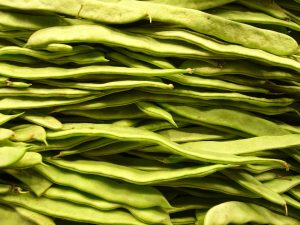
Green chilies
Green chilies are a must in every dish you cook. We cannot imagine our food without a dose of this spicy vegetable. It is an essential element in every dish. You can grow these monsoon vegetables very easily at home. Green chilies grow perfectly in hot and humid weather.
You can grow this very easily at home. All you need to do is select a spot in your kitchen with partial sunlight. You can also grow chilies in pots. For this, select a pot about 3-4 inches deep with proper drainage holes. Plant the seeds about 1 inch deep in the pots. Water them regularly and keep them in a spot that receives sunlight for 5-6 hours daily.
With proper care and warmth, the plant will soon bear fresh and healthy green chilies. So, these can be on your rainy season vegetables list.
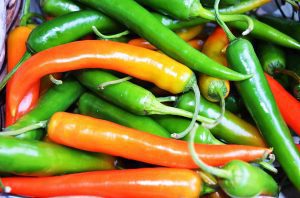
Radish
These easy to grow vegetables get ready to grow within 3 weeks of harvesting and hence should be there in your rainy season vegetables list. The best time to grow radish in India is between August to January.
They are very easy to grow. All you need to do is pick a spot that receives sun with partial shade. Make sure to remove any rocks from the ground so that the radish can grow properly. Place the seeds half-inch deep and with a distance of 2 inches between them. You can expect them to be ready in 30-40 days.
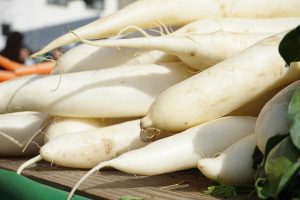
Brinjal
Brinjal is one of the most loved vegetables all across the world and hence should be there in your rainy season vegetables list. These are easy to grow and require 1-2 months for harvesting. Brinjals are a rich source of iron, calcium, and fiber. There are endless ways of eating them. Baigan ka bharta, fried brinjals, or in curries- they taste great regardless of how you cook them.
You can grow them easily in your garden. Unlike the other rainy season vegetables, brinjals need a lot of space to grow. They will grow best when planted in a sunny spot with moist soil. The seeds should be planted 1 cm deep and spaced about 15 cm from one another. With regular watering and care, the plants will soon be ready for picking.
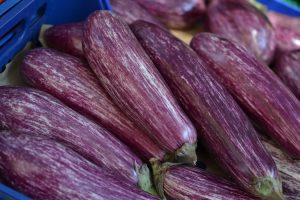
Ladyfinger
Ladyfinger is another vegetable that is loved by all and is a part of the rainy season vegetables list. This is rich in Vitamin A and low in calories. Hence it is suitable to be eaten by people who are trying to lose weight. This vegetable is a delightful sight to see in your kitchen garden due to the beautiful flowers that it bears.
Plant the seeds ½ – 1 inch deep and 12-18 inches apart in the soil. Soak the seeds in lukewarm water overnight before sowing to speed up the process of germination. The plants should be watered well for their proper growth. Once they are 2-3 inches in height, they are ready to be picked.
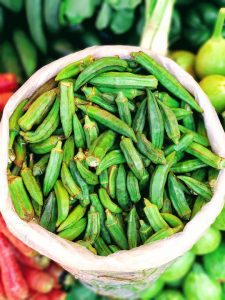 Gourds
Gourds
This wonderful vegetable comes in various shapes and sizes. They are easy to grow and require very little maintenance. You can include it to your rainy season vegetables list.
Pick a spot of your choice in your garden, sow the seeds 1-2 inches deep in a group of 3-4 seeds at a distance of 4-5 feet away. Gourds grow well on trellis and walls, so make sure that they do not touch the ground. They will be ready to be harvested in about 50-60 days.
If you are wondering how to grow vegetables at home in India, we are sure the above-mentioned information will come to your help.
Rainy season and a respite from the hot and humid weather brings with it a variety of monsoon vegetables that can be grown very easily at home. So bring out the gardener in you with these easy-to-grow vegetables.
Now that we have discussed the monsoon vegetables in India, let us come to the monsoon fruits in India.
Monsoon with the relief of hot weather also brings with it an array of bacterial infections that may take a toll on our body and overall health. A lot of it depends on the foods that you consume during the rainy season. Therefore, it is essential to boost your immunity in monsoon since the chances of falling sick during this time are pretty high. Eating healthy fruits will ensure that you get your daily dose of immunity.
Monsoon Fruits in India
As you know your rainy season vegetables list , it’s time to talk about the monsoon fruits. Listed below are monsoon fruits in India that you can eat to give your immunity a boost.
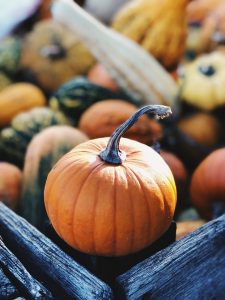
Jamun
Jamun is a storehouse of nutrients like vitamins, potassium, folate, and iron. It is low in calories and has a lot of medical values- it helps treat diarrhea, lung diseases, diabetes, and heart ailments.
They are dark purple in color, glossy, and slightly soft to touch when ripe. They have a sweet, sour, and slightly acidic taste. They should be eaten immediately after buying. If these are a little hard, they can be stored in the refrigerator and consumed after a day or two. Jamuns are best enjoyed raw. You can season them with some rock salt to get the best taste.
Jamun trees are tall and evergreen and grow on a variety of soil. Early rain is considered to be beneficial for the ripening of fruits and proper development of its size, color, and taste.
Litchis
These bright pink or reddish-brown colored fruits are extremely sweet when ripe and loved by all. They have high vitamin C levels, zero cholesterol and fat, and help increase resistance towards infections. It is a rich source of polyphenolic compounds called oil stones that have antioxidants, anti-influenza properties. Essential minerals like copper and potassium present help maintain blood pressure and RBC count, respectively. The high levels of Vitamin C present in them help in fighting the common cold. Litchis also aid in weight loss and protect our skin from harmful UV rays. They nourish the skin and reduce acne and dark spots.
The bark, root, and flowers can also be used for gargling to cure a sore throat.
Litchis, when fresh, can stay at room temperature for 2-3 days. After that, they should be kept in the refrigerator. They can remain fresh for 5-6 weeks.
These juicy, white, pulpy fruits can be best consumed raw or as juices, sorbets. Litchi-flavored ice-cream is also gaining immense popularity these days. These are monsoon season fruits.
Cherries
Cherries are available in abundance during the monsoon season. They have a high content of potassium and antioxidants. They help to fight heart diseases since they lower bad cholesterol and have anti-carcinogenic properties. They also help reduce blood pressure and uric level acid and help people suffering from gout and arthritis.
You can eat cherries raw or make puree, jams, or tarts. They can also be used as a topping on cakes, pastries, and ice-cream.
Cherries also slow down the aging process and prevent hair fall. The vitamin A present in it helps to maintain good eyesight.
Peaches
Peaches are a good source of Vitamin A, B, and carotene. They also contain vitamin C which protects the skin and improves vision. They also prevent us from catching a cold. They also contain fluorides that protect dental health.
Peaches can be consumed raw or as jams, in pies, tarts, salads, and cocktails.
Peach is often used as an ingredient in various creams and moisturizers. They help to make the skin soft and supple. Peach pulp or juice can help remove dead skin cells and protect our skin from harmful UV rays.
Plum
Plums are an excellent source of dietary fibers, copper, potassium, Vitamin C, and K. the reddish blue pigment anthocyanin helps to protect us from cancer. They relieve constipation and absorb iron, thus preventing anemia.
Plums can be consumed raw, or used in jams, jellies, and chutneys. These bright red, amber or dark purple fruits can be used in cakes and pastries or used to make jam.
Apples
“An apple a day, keeps the doctor away”- They are rich in vitamins- A, B1, B2, and C and minerals like phosphorus, calcium, iron, and iodine. They are good for bones, skin, muscle, nerve, and brain development.
Apples are mostly eaten raw. They can also be added to puddings, jams, jellies, tarts, and juice. It is advised by all doctors to consume an apple every day.
Pomegranates
Pomegranates help to boost our immunity during the rainy season. They are rich in antioxidants that prevent aging, high blood pressure, cancer, and heart ailments. They also contain B-vitamins and folate that aid in developing red blood cells and regulating blood circulation.
Pomegranates can be consumed raw or used in fruit salads, puddings, juice, or yogurt.
The information provided above will help you to choose monsoon fruits in India. Along with buying from the market, you can grow these at home too.
Foods to enjoy During Monsoon
Just the onset of monsoons makes our hearts flutter with happiness. We all crave monsoon afternoons and evenings sitting at home with our favorite story-books and sipping on hot tea and pakoras to relish on. Below listed foods fall in the category of food we eat in rainy season.
Bhutta
There is hardly anyone who doesn’t like the stove-hot bhuttas garnished with spices and lots of lemon juice. They taste better when eaten with your loved ones by your side.
Pakoras
Be it onion, potato, brinjal, mixed vegetable, cauliflower, chili, or paneer, we cannot imagine your monsoon evenings without these mouth-watering snacks. The perfect accomplice with hot tea, they are sure to make your rainy evenings memorable.
Momos
What can be better than a plate of hot chicken or vegetable momos served with hot and spicy chili and pudina chutney!

Soup
A bowl of chicken, tomato, or clear soup is all you need to make your monsoon evenings perfect.
Conclusion
This article gives you information on the rainy season vegetables list. It also tells you which fruits help to boost our immunity and keep diseases at bay.


